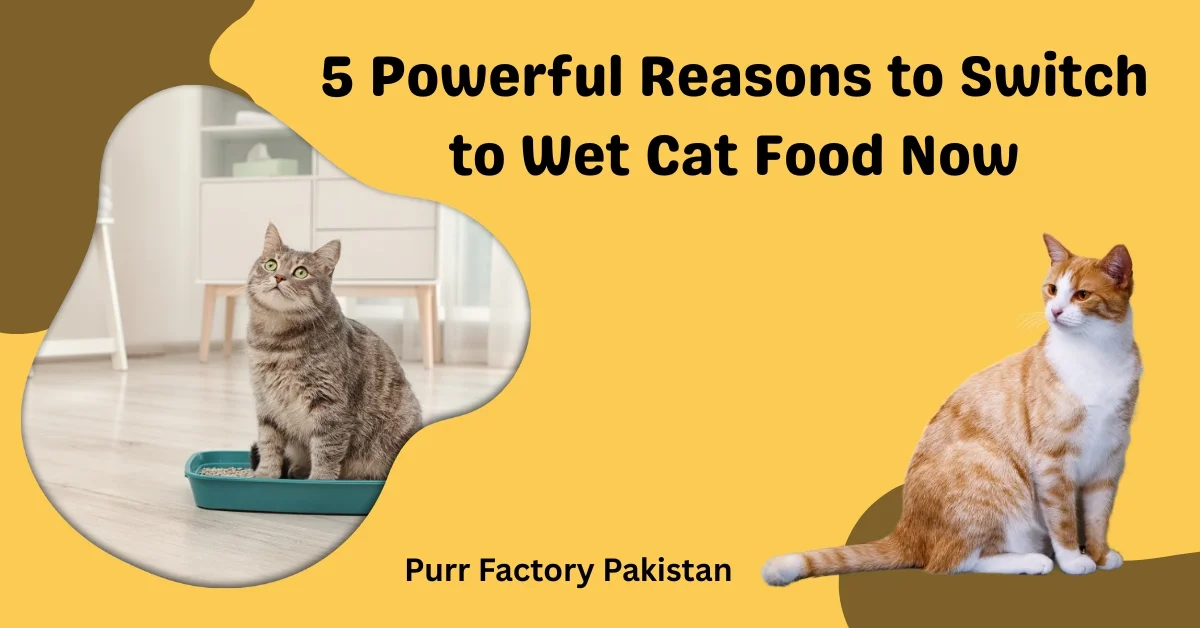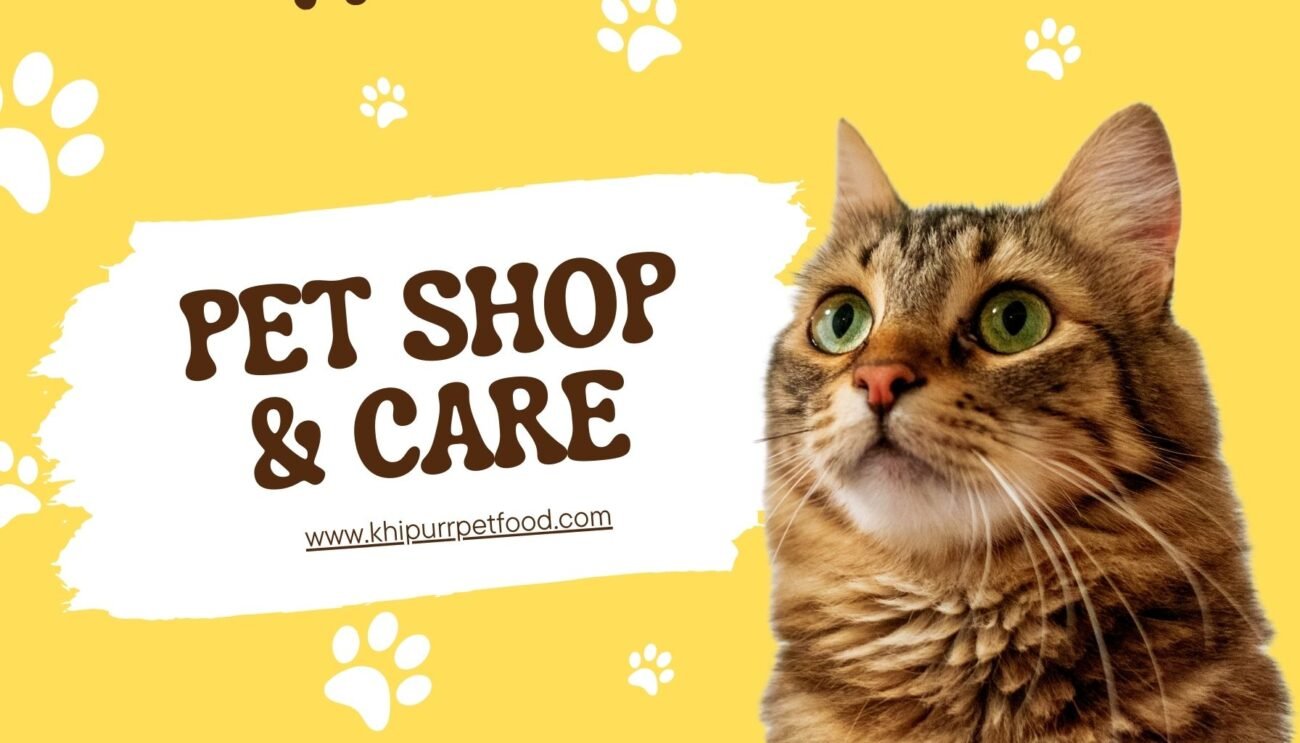5 Powerful Reasons to Switch to Wet Cat Food Now
Wet Cat Food is more than just a meal option for your feline friend it plays a vital role in their overall health and well-being.
Many cat owners rely on dry kibble because it’s convenient and easy to store, but cats have unique dietary needs that are best met with moisture-rich, protein-packed food.
Since cats naturally have a low thirst drive, they often don’t drink enough water on their own, which can lead to dehydration, urinary tract issues, and other health problems.
Wet food provides a simple solution by delivering the hydration your cat needs directly through their meals while also offering high-quality protein and essential nutrients.
It supports healthy digestion, helps with weight management, and closely mimics a cat’s natural prey-based diet.
By switching to wet food, you’re not just feeding your cat you’re actively improving their quality of life and reducing the risk of chronic illnesses.
5 Powerful Reasons to Switch to Wet Cat Food Now
In this guide, we will explain five powerful reasons why switching to wet cat food now can transform your cat’s health and happiness.

Reason 1. Wet Cat Food Provides Essential Hydration
Cats naturally have a low thirst drive. Unlike dogs, they don’t drink much water on their own. This is because cats evolved in dry environments where most of their hydration came from the prey they hunted.
When cats rely solely on dry kibble, which contains only about 10% moisture, they are at a higher risk of dehydration.
Dehydration can lead to serious health problems such as urinary tract infections, kidney disease, and constipation.
Wet cat food solves this issue because it contains 70-80% water content, helping your cat stay hydrated with every meal.
Proper hydration supports essential body functions like circulation, digestion, and temperature regulation. It also dilutes urine, reducing the risk of urinary crystals and bladder stones.
For cats that rarely drink from their water bowl, wet food provides a consistent and reliable source of fluids. This is especially important for senior cats or cats with pre-existing health concerns.
Ensuring your cat stays hydrated can prevent long-term complications and keep their body functioning optimally.
Feeding wet food is one of the simplest and most effective ways to support your cat’s kidney and urinary health while promoting overall well-being.
Reason 2. Better Weight Management and Reduced Obesity
Feline obesity is a growing problem, with millions of cats worldwide carrying excess weight. Obesity leads to serious health risks, including diabetes, joint problems, and heart disease.
The main culprit is often a calorie-dense diet combined with limited physical activity.
Dry kibble is packed with carbohydrates, which cats do not need in large amounts. Cats are obligate carnivores, meaning their bodies are built to process protein, not carbs.
When cats consume too many carbohydrates, the excess energy is stored as fat, leading to weight gain.
Wet cat food is naturally lower in calories because of its higher water content. It is also higher in protein and lower in carbohydrates, making it more suitable for your cat’s dietary needs.
The moisture-rich content helps cats feel full after meals, reducing the urge to overeat.
Feeding smaller, portion-controlled servings of wet food two to three times a day keeps metabolism steady and prevents obesity.
By switching to wet food, you can better manage your cat’s weight, improve energy levels, and reduce the risk of obesity-related diseases.
Reason 3. Supports Better Digestive Health
Cats require a diet that is easy to digest and packed with high-quality nutrients. Wet cat food provides a soft texture that is easier to chew and digest, especially for kittens, senior cats, or cats with dental issues.
The high moisture content in wet food aids digestion by keeping the digestive tract hydrated. Proper hydration improves nutrient absorption and helps prevent constipation.
Wet food is also less likely to contain excessive fillers such as corn, soy, or wheat, which are common in dry kibble and can irritate sensitive stomachs.
For cats with food allergies or sensitivities, wet food offers simpler ingredient lists and more specialized formulas. This makes it easier to identify and avoid potential allergens.
Since cats are natural carnivores, their digestive systems are designed to process animal-based proteins. Wet food typically provides more biologically appropriate protein sources, leading to healthier digestion and improved nutrient utilization.
Switching to wet food supports gut health, leading to better energy, improved stool quality, and overall digestive comfort for your cat.
Reason 4. Improved Dental and Oral Health
Many cat owners believe dry kibble cleans their cat’s teeth, but this is a common misconception. Most cats do not chew kibble thoroughly enough for it to have a cleaning effect.
Instead, the crumbs can get stuck between teeth and gums, potentially worsening dental problems.
Wet cat food has a soft texture that is gentle on the teeth and gums, especially for cats with dental pain or missing teeth. While wet food alone will not clean teeth, it can be part of a healthier oral care routine.
Proper hydration from wet food also helps reduce bacteria in the mouth, supporting gum health.
Dental disease is very common in cats, with most showing signs by age three. If left untreated, it can lead to infections that affect major organs like the heart and kidneys.
Feeding wet food alongside regular brushing and professional cleanings helps minimize these risks.
If your cat already has dental issues, wet food is a comfortable and safe option that ensures they continue to get proper nutrition without pain while eating.
Reason 5. Encourages Natural Eating Behavior and Better Quality of Life
In the wild, cats hunt small prey that is rich in moisture and protein. Wet cat food closely mimics this natural diet, providing a more species-appropriate form of nutrition.
This not only meets your cat’s physical needs but also supports their instinctual behaviors.
Feeding wet food in small, frequent portions throughout the day encourages natural hunting patterns. It also provides mental stimulation, especially when used with puzzle feeders or slow-feeding bowls.
Cats are highly sensitive to smell and texture. Wet food has a stronger aroma and softer consistency, making it more appealing to picky eaters, senior cats, or those recovering from illness.
When cats enjoy their meals and feel satisfied, they are less likely to exhibit negative behaviors such as excessive meowing or aggression.
A well-fed, hydrated cat is calmer, happier, and more active, improving their overall quality of life.
Cost Considerations and Budget-Friendly Tips
One of the main concerns cat owners have about wet food is cost. While wet cat food can be more expensive than dry kibble, there are ways to manage expenses without compromising your cat’s health.
Buying in bulk is one of the easiest ways to save money. Many brands offer multi-packs of cans or pouches at a discounted price. You can also look for sales, coupons, or subscription discounts from online retailers.
Mix feeding is another option. By combining wet food with a small portion of dry kibble, you can stretch your budget while still providing the hydration and nutritional benefits of wet food.
This approach also allows for a gradual transition for cats used to eating only dry kibble.
Focus on quality over quantity. High-quality wet food may cost more upfront, but it can reduce veterinary expenses in the long run by preventing obesity, urinary problems, and other health issues.
Think of it as an investment in your cat’s long-term well-being.
Finally, consult your veterinarian about the ideal portion sizes for your cat’s age, weight, and activity level to avoid overfeeding and unnecessary waste.

How to Transition Your Cat to Wet Food
Switching to a new diet should be done gradually to avoid upsetting your cat’s stomach or causing resistance to the change.
Start by mixing a small amount of wet food with your cat’s current dry food. Over the course of 7-10 days, slowly increase the proportion of wet food while reducing the dry food.
By the end of this period, your cat should be fully adjusted to the new diet.
During the transition, monitor your cat’s behavior, stool quality, and appetite. If you notice persistent diarrhea, vomiting, or refusal to eat, consult your veterinarian for advice.
Some cats are picky eaters, so experiment with different textures such as pâté, chunks, or gravy-based formulas to find what your cat prefers.
Warming the food slightly can also enhance its aroma and make it more appealing.
Conclusion
Switching your cat’s diet to wet cat food is one of the most impactful choices you can make for their long-term health and happiness.
Unlike dry kibble, wet food provides the essential moisture cats need to stay properly hydrated, which supports kidney health, prevents urinary tract problems, and improves overall body function.
Its high-protein, low-carbohydrate content makes it ideal for weight management, reducing the risk of obesity and related diseases like diabetes.
The soft texture is easy to digest, especially for senior cats or those with dental issues, while the rich aroma and taste encourage better appetite and natural eating behaviors.
Though wet food may seem more expensive, the benefits far outweigh the cost by preventing costly health problems in the future.
With proper portion control and smart buying strategies, it can fit into most budgets.
By transitioning gradually and selecting a high-quality, balanced formula, you provide your cat with nutrition that closely resembles their natural diet.
Choosing wet food today means a healthier, more active, and happier cat tomorrow a simple decision that creates a lifetime of positive change for your beloved pet.
Related Articles
